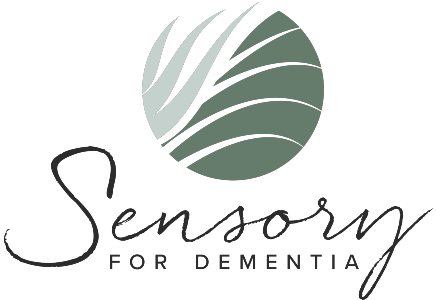Using evidence and expert material to inform decisions about care plans and program development with a focus on social and occupational justice. Topics organized alphabetically: accessibility, anti-racism, burnout, cognition, dementia care, equity, grief, LGBTQ+, prisoners with dementia, sensory, stress management, trauma-informed care
Occupational justice is “the right of every individual to be
Wilcock & Townsend, 2009, p. 193
able to meet basic needs and to have equal opportunities
and life chances to reach toward her or his potential but
specific to the individual’s engagement in diverse and
meaningful occupation.”
Accessibility & Inclusion
- Dementia Friendly America: Community Toolkit (Introduction, Phases 1-4, Technical Assistance)
- Developing dementia-friendly communities: Learning and guidance for local authorities (Local Government Association & Innovations in Dementia)
- Towards a dementia-inclusive society: A WHO toolkit for dementia-friendly initiatives (World Health Organization)
Anti-Racism
- Lavalley, R. & Johnson, K.R. (2020). Occupation, injustice, and anti-Black racism in the United States of America. Journal of Occupational Science, DOI: 10.1080/14427591.2020.1810111
- Harvard Business Review: U.S. Businesses Must Take Meaningful Action Against Racism by Laura Morgan Roberts and Ella F. Washington
- Anti-Racism Resources by Coalition of Occupational Therapy Advocates for Diversity (COTAD)
- Grullon, E., Hunnicutt, C., Morrison, M., Langford, O., & Whaley, M.M. (2018). A need for occupational justice: The impact of racial microaggression on occupations, wellness, and health promotion. Retrieved June 18, 2020, from https://nsuworks.nova.edu/occupation/vol3/iss1/4
Burnout
- Gerain, P. & Zech, E. (2019). Informal caregiver burnout? Development of a theoretical framework to understand the impact of caregiving. Frontiers in Psychology, 10(1748). DOI: 10.3389/fpsyg.2019.01748.
Cognition
- Allen, C.K. & Blue, T. (1998). Cognitive disabilities model: How to make clinical judgments. In N. Katz (Ed.) Cognition and occupation in rehabilitation: Cognitive models for intervention in occupational therapy (pp. 225-280). Bethesda, MD: American Occupational Therapy Association.
Dementia Care
- BBC News Article: What Those Living with Dementia Want People to Know
- Gitlin, L.N., Winter, L., Dennis, M.P., Hodgson, N., Hauck, W.W. (2010). A biobehavioral home-based intervention and the well-being of patients with dementia and their caregivers. The Journal of the American Medical Association, 304, 983-991.
Equity
- About Racial and Ethnic Disparities in Alzheimer’s: UsAgainstAlzheimer’s
- Empathy and Appreciation for the Impact of the Social Determinants of Health: Robert Wood Johnson Foundation
- Black Americans and Alzheimer’s disease, research deficiency, and social determinants of health: Alzheimer’s Association of Colorado
Grief & Loss
- Coronavirus Grief: Coping with the loss of routine during the pandemic (Mayo Clinic, 2020)
LGBTQIA+
- LGBTQIA+ Resources by Coalition of Occupational Therapy Advocates for Diversity (COTAD)
- National Resource Center on LGBT Aging: extensive list of educational resources, technical assistance, and training opportunities. This center is led by SAGE (link below).
- SAGE: Advocacy & Services for LGBT Elders
- SAGECare: Invest in LGBT competency and create a more welcoming community for LGBT older adults. Services include training, consultation, on-demand courses, and on-demand CEUs.
Prisoners with Dementia
- Supreme Court Extends Eight Amendment Protections to Prisoners with Dementia by the Equal Justice Initiative
Sensory
- Albers, M.W., Gilmore, G.C., Kaye, J., Murphy, C., Wingfield, A., Bennett, D.A., Boxer, A.L., Buchman, A.S., Cruickshanks, K.J., Devanand, D.P., Duffy, C.J., Gall, C.M., Gates, G.A., Granholm, A., Hensch, T., Holtzer, R., Hyman, B.T., Lin, F.R., McKee, A.C., … Zhang, L.I. (2015). At the interface of sensory and motor dysfunctions and Alzheimer’s Disease. Alzheimers Dement., 11(1), 70-98. DOI: 10.1016/j.jalz.2014.04.514.
- Baker, R., Bell, S., Baker, E., Holloway, J., Pearce, R., Dowling, Z., & Wareing, L.A. (2010). A randomized controlled trial of the effects of multi-sensory stimulation (MSS) for people with dementia. British Journal of Clinical Psychology, 40(1), 81-96.
- Kinnealey, M. & Fuiek, M. (1999). The relationship between sensory defensiveness, anxiety, depression and perception of pain in adults. Occupational Therapy International, 6(3), 195-206. Retrieved from https://onlinelibrary.wiley.com/doi/epdf/10.1002/oti.97.
- Miller, L.J. et al. (2007). Concept evolution in sensory integration: A proposed nosology for diagnosis. The American Journal of Occupational Therapy, 61, 135-140. DOI: 10.5014/ajot.61.2.135
Stress Management
- Gerritsen, R.J.S. & Band, G.P.H. (2018). Breath of life: The respiratory vagal stimulation model of contemplative activity. Frontiers in Human Neuroscience, 12(397). DOI: 10.3389/fnhum.2018.00397.
- Porges, S.W. (2009). The polyvagal theory: New insights into adaptive reactions of the autonomic nervous system. Cleveland Clinic Journal of Medicine, 76(2), S86-S90. DOI: 10.3949/ccjm.76.s2.17.
- Porges, S.W. (2007). The polyvagal perspective. Biological Psychology, 74(2), 116-143. DOI: 10.1016/j.biopsycho.2006.06.009.
Trauma-Informed Care
- P.T.S.D. –
- P.T.S.S. – Post Traumatic Slave Syndrome, a research-based theory by Dr. DeGruy
